Self-adhesive vinyl tiles are a wonderful invention that has made it super-easy for even novice DIYers to install their own floors – and for the most part, they work exceptionally well.
However, occasionally you may find that they don’t perform as expected, so to help, here we talk about self-adhesive vinyl floor tiles not sticking and what to do when you find yourself facing this problem.
Table of Contents
Possible scenarios you might face
When dealing with self-sticking tiles, there are several different scenarios you could face.
It might be that you’re having problems during installation because you’re not installing the tiles correctly, or it could be that you’re doing the job right but it’s still not working.
Alternatively, maybe you did everything right at the time and the tiles were installed properly, but later you find them coming unstuck again and starting to peel up.
In this post, we’ll be dealing with all these situations, talking about how to avoid these problems and what to do if, despite all your best efforts, you still find yourself facing similar issues.
However, before we get onto that, let’s take a step back and think about why tiles don’t stick properly in the first place.
Why don’t self-adhesive tiles stick?
Generally speaking, you shouldn’t have any trouble getting good-quality self-adhesive tiles to stay in place, but there are some reasons why they won’t work as well as they’re supposed to.
Self-sticking tiles are designed to be fitted to flat, dry floors – so if your floor is not flat or if it is wet, you probably won’t have the success you were expecting.
Also, dirt, grit and grime on the floor where you are installing the tiles will prevent them from binding correctly, so this is another issue to watch out for.
Something a little bit less obvious – but important nonetheless – has to do with temperature. Both the temperature of the tiles when you install them and the ambient temperature of the room can affect how well tiles stick, so make sure both are warm enough before you start.
If you understand all these possible issues and make sure you don’t have problems in any of these areas before you start, you have a much better chance of success. So now let’s think about what a proper install should look like.
How to install self-adhesive vinyl tiles successful
The first step – and one that a surprising number of people skip – is simply to read through the instructions that come with the tiles.
They’re there for a reason, and they’ll tell you exactly how to install the tiles, so if you don’t take the time to read them, you can hardly complain when the results are less than satisfactory.
Next, you should prepare the area where the tiles are going to be laid. As we mentioned, the surface needs to be flat and dry. Making sure the floor is dry doesn’t need any explanation, but if the floor is lumpy or has cracks, you’ll need to rectify this by using a leveling compound.
Once you’re satisfied that the floor is flat, you need to clean it. Use a broom to sweep the floor and follow this up by vacuuming it too. For the best results, you need to remove as much dirt, dust and debris as you can, so don’t skip this step either.
Make sure you bring the tiles indoors 48 hours before you start, and make sure the temperature in the room is set to at least 70°F.
Note that tiles can change size and shape as they heat, so bringing cold tiles inside and using them immediately will negatively affect the result.
Once the area is ready, start laying the tiles by peeling the paper off the back and putting each one in place. To create a firm bond, you need to push down on each one, so make sure you hold each in place according to the instructions.
Avoid kneeling or walking on the tiles you have just installed as this may cause them to move around, weakening the bond. Again, you should refer to the instructions, but you probably shouldn’t walk on them for at least a few hours to give the adhesive time to bond.
Lay a few tiles and wait
It is highly recommended that you start by laying a few tiles and then wait for a few hours. This will allow you to see how well they stay in place.
If you followed the installation instructions correctly, you shouldn’t have any problems, but if you find they don’t stick in place as well as you hoped, you can then troubleshoot your installation process to try to identify why.
Was the floor clean enough? Was the floor flat and level enough? Was the floor wet? Did you press each tile down firmly enough? Was the room too cold? How about the temperature of the tiles themselves?
If you go through this list and still can’t work out why the tiles aren’t sticking, you can then move on to thinking about other solutions.
Use vinyl tile adhesive
If your tiles don’t want to stay in place, the simple solution is to use a dedicated vinyl tile adhesive, and the process is relatively easy.
As always, the first step is to read the instructions since every product will be slightly different, but the general process is the same.
Apply a thin layer of adhesive to an area of the floor and then fit each tile in place. Some adhesive is likely to ooze up between the tiles, but this is normal. Just make sure you wipe it off as you work because if you don’t, it will leave a mark on your tiles.
Let the tiles rest as long as the instructions tell you to, and you should find they are now firmly fixed in place
Reactivating adhesive if tiles peel up
After tiles have been in place for some time, you may find that some begin to peel, especially at the corners, and the first method you can try to resolve this problem is to reactivate the adhesive using heat.
To do this, place some aluminum foil over the tiles to protect them and heat them gently with an iron or a hairdryer. The heated adhesive will then form a new bond, so cover the tiles with wax paper and place something heavy like books or bricks on top and leave them to set.
Reapplying adhesive
If reactivating the old adhesive doesn’t work, you’ll need to reapply fresh adhesive to the affected tiles.
Start by using the same aluminum foil and iron/hairdryer technique to heat the tiles. This will loosen the old adhesive, allowing you to pry them up.
Clean the underside of the tiles and the area of floor they came from. You might want to try using ammonia for this, but if you do, make sure you wear gloves.
Once the floor and tiles are clean, apply a thin layer of adhesive to the floor, according to the instructions on the product you are using.
Relay the tiles, wiping off any adhesive that oozes up, cover them in wax paper and apply something heavy like books or bricks to hold them in place.
After waiting the required amount of time as specified in the instructions, your tiles should now be fixed firmly in place again and shouldn’t move again for some time.
Tips
Here are a few other tips that will help you achieve the best results.
- Don’t use adhesive unless you need it
Although adhesive will help fix your tiles in place, you shouldn’t use it as a matter of course. As a rule, self-adhesive tiles work well on their own without any extra help, so you should only resort to using adhesive for tiles that refuse to stick.
- Don’t use too much adhesive
When spreading the adhesive on the floor, don’t use too much – otherwise, you will have to deal with far too much oozing up between the tiles, something you want to avoid. Instead, just apply a thin film of adhesive, and this should be enough to do the job.
- Leave yourself access
Be smart about how you lay the tiles and leave yourself an access route. Don’t lay the whole floor and then discover you need to walk all over the tiles.
Rather, lay one section while leaving yourself somewhere to step, then do the second section later so you don’t need to step on freshly laid tiles.
- Use transfer tape
If the corner of a tile pops up and you can’t get it to stick by reactivating the adhesive with heat, you can try applying transfer tape underneath instead. This is a quick solution that’s easier than applying fresh adhesive that will allow you to fix the problem properly later.
Not a major issue
Most people don’t have much trouble with their vinyl floor tiles, but as you can see, when it happens, it’s still not a major issue to deal with. All you need to do is follow the advice in our guide, and your vinyl floor panels will be fixed back in place in no time.
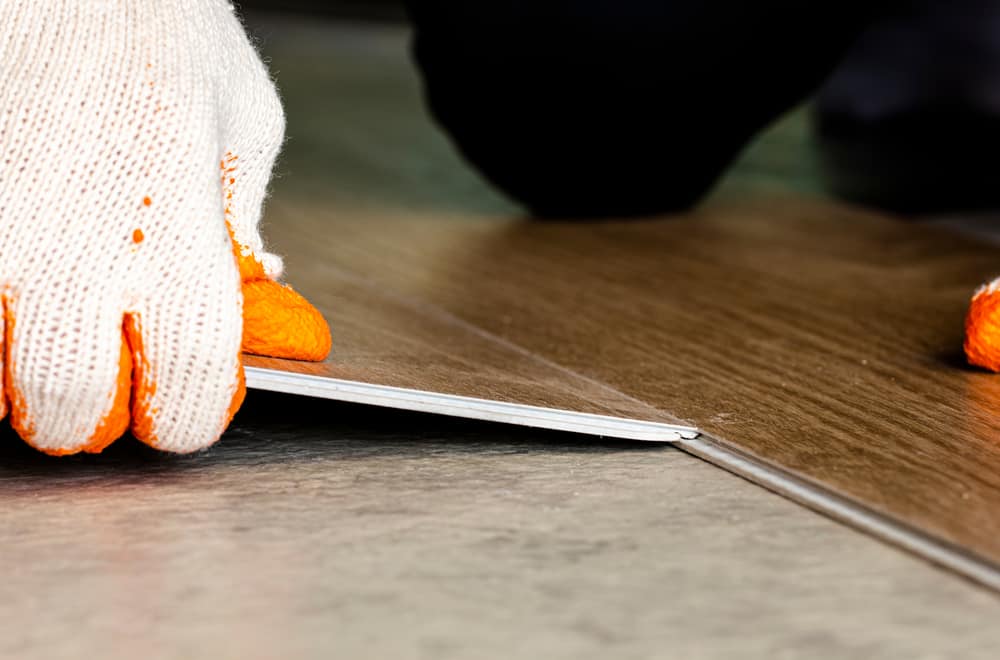
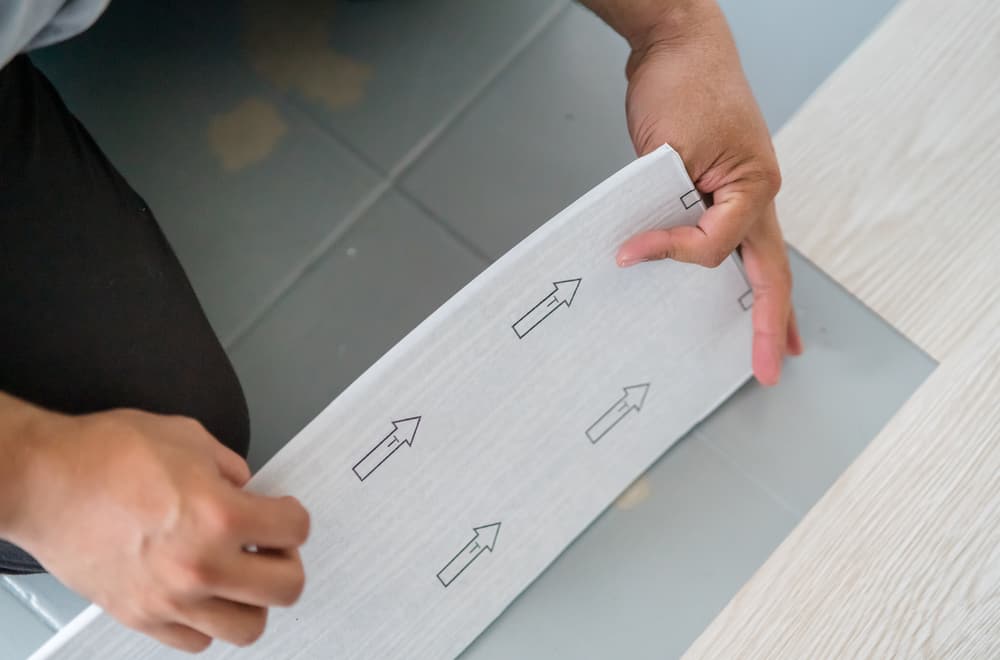
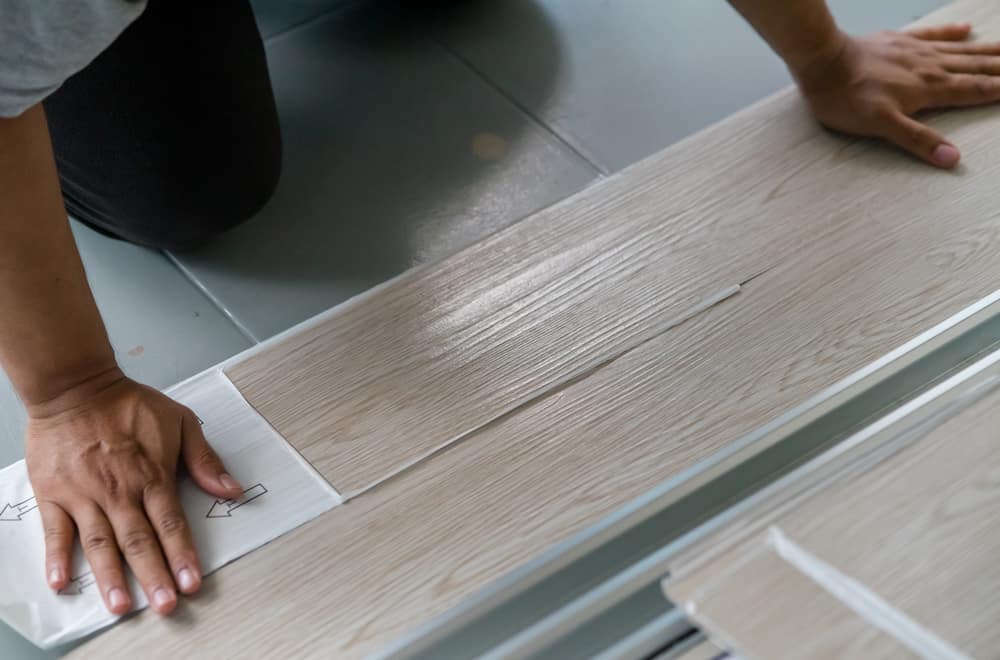

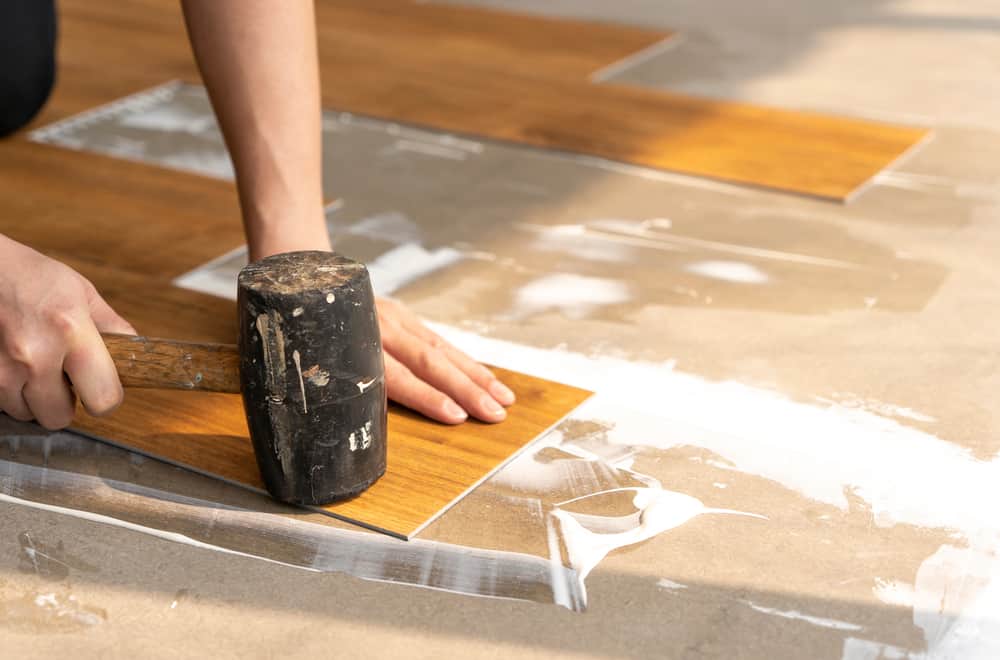
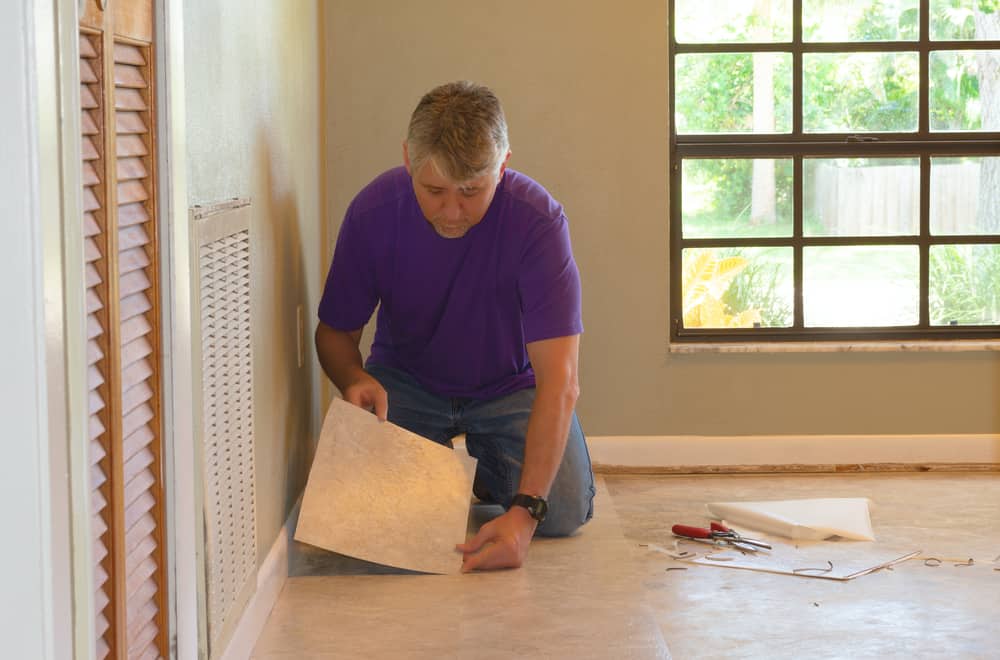
What is transfer tape ?